As the Registrar of the climate friendly travel registry, I am advocating that the tourism industry makes plans to become carbon neutral by 2050, in line with all Nationally Determined Contributions to the Paris Agreement. Climate friendly travel is tourism that has a low carbon footprint, that is linked to the 2030 United Nations development agenda and its Sustainable Development Goals and that is aiming for a maximum of 1.5 degree global warming. I am inviting all travel and tourism companies and communities to register their carbon reduction and sustainability ambitions on the registry.
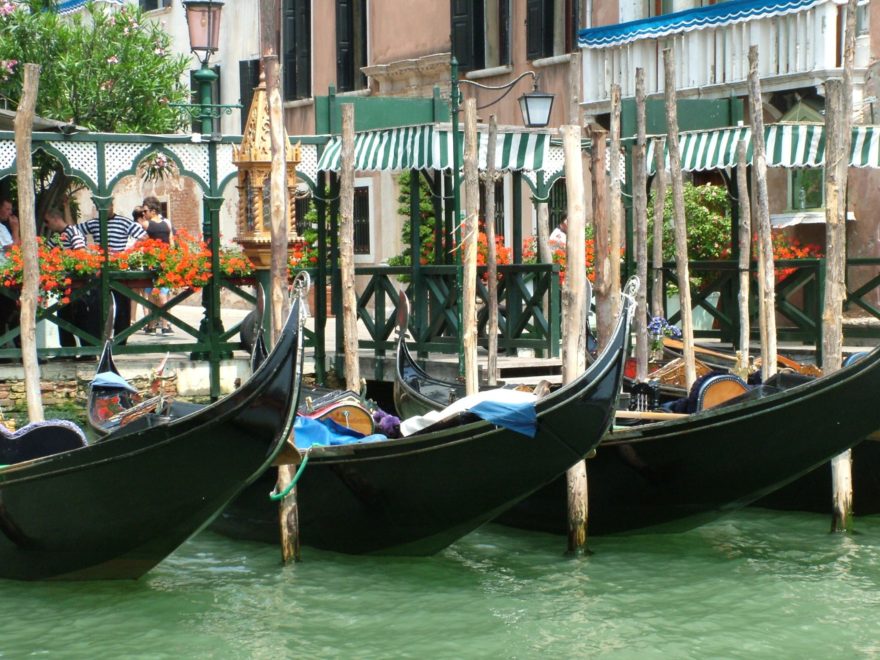
One critical area for low-carbon tourism development is the construction and renovation of buildings, be they hotels, restaurants or visitor centres. After all, buildings represent 39% of global carbon dioxide emissions according to the World Green Building Council, and 11% is from non-residential buildings.
I have often been asked how to reduce the carbon footprint of a hotel or restaurant. The Sustainable Hospitality Alliance has some excellent reports, but let me use this opportunity to share my thoughts.
One of the key issues in construction is the use of concrete. Concrete is a mixture of cement, sand and gravel. Earlier this year, I wrote about the long-term challenges related to the supply of sand for construction , but cement is another issue. Cement is made from limestone (calcium carbonate), which is generally quarried from open mines. Limestone landscapes are called karst, and they occur throughout the world. My website describes some of the amazing karst areas that I have been fortunate to visit. One of the most spectacular places is the Gunung Mulu National Park in Sarawak, Malaysia.
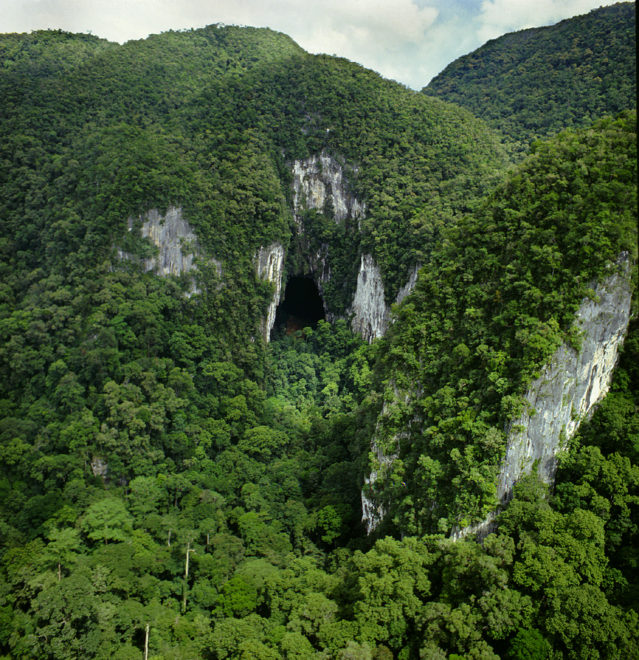
Deer Cave in Gunung Mulu National Park, Sarawak
In very simple terms, cement is made by burning the limestone to produce calcium oxide, which is called lime, and the world production of cement is about four billion tonnes per year. The side effect of this chemical reaction is the production of carbon dioxide (CaCO3 → CaO + CO2), and if the cement industry were a country, it would be the third largest carbon dioxide emitter in the world with up to 2.8 billion tonnes CO2 per annum.
Green construction therefore aims to use alternative construction materials, or recycle concrete from demolished sites. Alternative building materials could include stone, as we do here in Malta, or bricks made from clay, as is more common in the low countries. More recently, the use of wood as a building material has regained interest. The EU President, Ursula von der Leyen made a speech in October 2020 where she called for a “construction industry that uses natural materials such as wood or bamboo”.
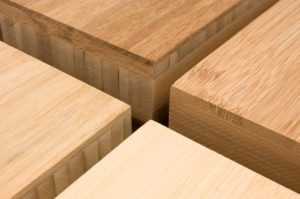
bamboo panels
Interior design and finishing is an area where low carbon materials are particularly well suited. For example, window frames and doors should be manufactured from wood or bamboo, instead of PVC. Bamboo flooring can be installed instead of carpets or tiles. Recent life-cycle analyses show how engineered bamboo materials can be carbon-negative over their full life-cycle, even when transported and used in Western Europe. This is because of the carbon stored in the bamboo products, and because those products can be burned as a substitute for fossil fuel-based energy in their end-of-life phase.

From: INBAR Technical Report 35; The Environmental Impact of Industrial Bamboo ProductsUsing paints and stains with lower volatile organic compounds is another aspect that will reduce the carbon footprint of the project. Water-based paints are less harmful than oil-based paint as they contain less Volatile Organic Compounds (VOC). VOCs are solvents which readily evaporate, contributing to the formation of greenhouse gases in the atmosphere. They increase a product’s environmental impact and are found in higher levels in solvent-based paints.
Direct CO2 emissions from managing a building
According to the Sustainable Hospitality Alliance, the global hotel industry will need to reduce its GHG emissions per room per year by 66% from 2010 levels by 2030, and 90% by 2050. On average, 50% of the reduction will need to be achieved internally, and that calls for alternatives to the status quo.
Buildings release carbon dioxide directly when they use equipment that relies on combustion. Boilers and furnaces used for space heating and cooking, pumps and sewage disposal and general electricity consumption to power lights and equipment all generate greenhouse gases, especially CO2.
Water heating is a major contributor to the total energy consumption of a hotel or restaurant. Other than purchasing an energy efficient water heater, there are three methods of reducing water heating expenses: you can simply use less hot water, turn down the thermostat on the water heater, and insulate the water heater and the hot and cold water pipes.
One area that is often overlooked, especially in the global South, is the use of air conditioners for cooling. A 2019 study found that a total of 1.8–4.1 billion people in South and South-East Asia and sub-Saharan Africa are potentially exposed to heat stress due to lack of access to cooling. Covering this demand would lead to a substantial increase in energy requirements. Estimates are as high as 14% of current global residential electricity consumption, which would be another major contribution to the emissions from buildings.

Back-up on-site power generation contributes to building emissions if the energy input is a fossil fuel. For example, both diesel generators and steam micro-turbines produce emissions, although the impact per kilowatt-hour is normally higher from a diesel-powered engine.
All these activities mentioned above can be accomplished without local CO2 emissions. For example, ground source heat pumps can replace boilers, furnaces and conventional water heaters, and wind turbines, micro-hydro and solar photovoltaic systems can be used to generate clean electricity. This can be combined with energy storage to compensate for the variability of wind and sunshine, making the overall system virtually carbon neutral.
Energy efficiency
While it may be impossible for a tourism facility to avoid the use of energy, it is much easier to conserve the energy, and to reduce energy loss.
Simple efforts are the installation of double or triple glazing to keep the heat in, and the cold out. Green roofs offer benefits such as better insulation, on-site gardens and rainwater catchment and storage. If they are flat they are also excellent places to install solar panels.

Traditional incandescent light bulbs consume an excessive amount of electricity and must be replaced more often than their energy efficient alternatives. Halogen incandescent bulbs, compact fluorescent lights, and light-emitting diode bulbs (LEDs) use anywhere from 25-80 percent less electricity and last 3 to 25 times longer than traditional bulbs. Timer switches and movement detectors will switch lights off and on when needed, and avoid using power when no-one is around. Maximizing natural light in building saves on artificial lighting needs and energy costs.
“Phantom loads,” or the electricity used by electronics when they are turned off or in standby mode, are a major source of energy waste. In fact, it is estimated that 75% of the energy used to power household electronics is consumed when they are switched off. Making sure that equipment turns off when not in use saves energy and money.
On average, appliances are responsible for roughly 13% of total household energy use. Although energy efficient appliances might have higher up-front purchase prices, their operating costs are often 9-25% lower than conventional models. In the long run, it pays to be energy efficient.
Indirect building-related CO2 emissions
Not all the emissions attributed to buildings are produced on site. For example, if you have a property where all energy is produced by voltaic panels and energy-efficient heat pumps, no emissions are produced locally. However, if the electricity to power the pumps comes from a power station that operates on fossil fuel, the heating systems are still producing emissions indirectly.
Indirect emissions can also be attributed to transport systems that are associated with the enterprise. If taxis, buses and boats to transport guests use diesel or petrol as fuel, the carbon footprint of the hotel will reflect this. And of course, there is a significant carbon footprint from international air transport, if tourists come from overseas.
Similarly, the growing and supply of the food and drinks consumed on the premises will have a carbon footprint that is an indirect contribution to the CO2 emissions of the hotel or restaurant. Locally sourced fruit and vegetable have a much lower footprint produce flown in from the other side of the world, and they often taste better as well.
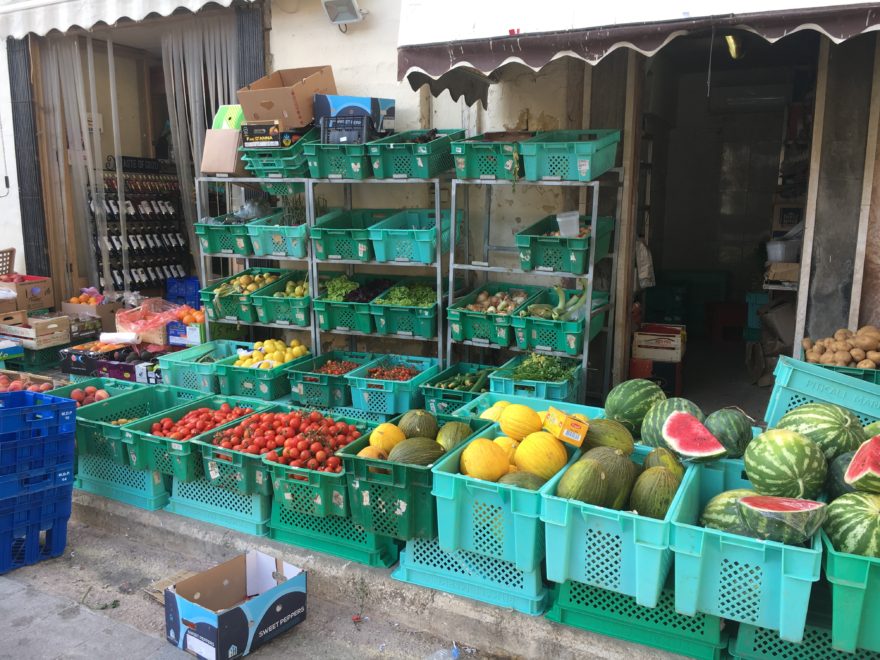
A market stall in Victoria, Gozo island, Malta
Compensating for the remainder
Mitigation hierarchies have been used for over a century in natural resource management and include prioritized steps that lead to the best outcomes for people and nature. These steps are generally Avoid, Reduce/Mitigate, Restore, Compensate/Offset.
The system to achieve carbon neutrality is first to try and avoid what you can by planning ahead and looking for low-carbon options, mitigating what is currently happening at your premises and reducing your footprint as far as possible, and finally compensate what is left by what is called “carbon offsetting”. The offset is most likely the only way to deal with the indirect carbon emissions, until such time that the external source has changed.
Carbon offsetting is not an answer for a real low-carbon scenario, as it simply moves the carbon footprint off-site to somewhere else. But it is an interim solution in the route to zero-carbon. The concept revolves around the fact that you can pay for another entity to be responsible for the reduction of your carbon footprint. Normally the payment is linked to the planting of trees or the development of a low carbon project. But, while it allows you to calculate your carbon emissions as zero, it does not reduce the overall amount of carbon in the air.
There are many afforestation and reforestation initiatives around the world. Yet, I believe that planting bamboo is a particularly effective way to create a natural carbon sink, and carbon offsets that aim to create bamboo plantations could provide a range of benefits to the local community. There are opportunities in Africa and Asia, and I am supporting a project in Europe:
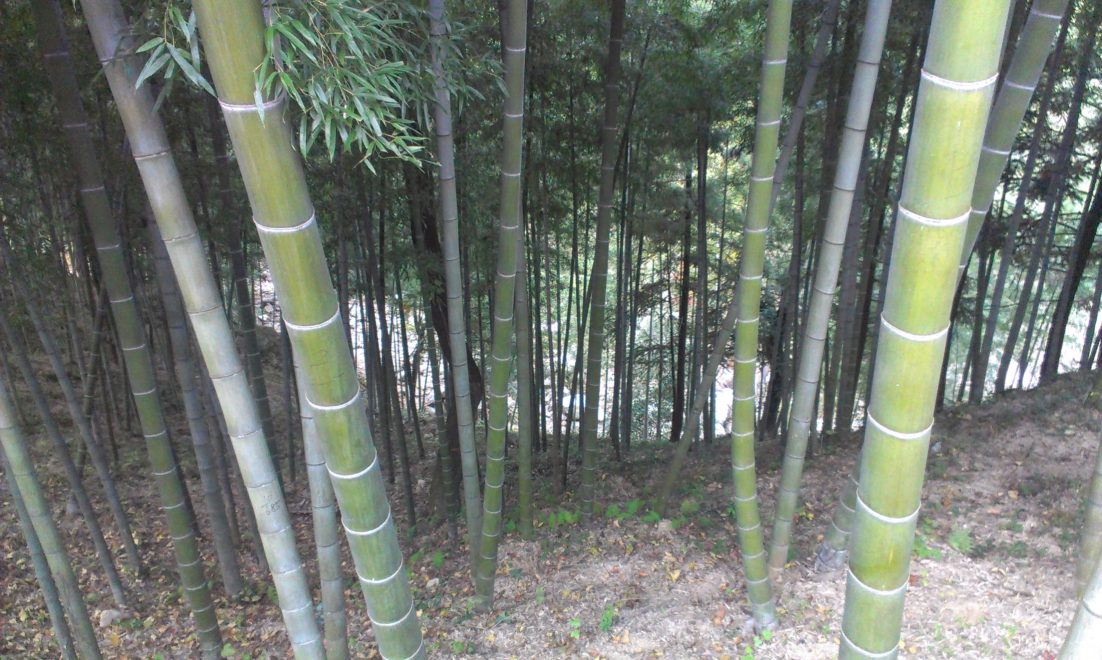
Bamboo plantation in Anhui Province, China
I started by saying that in order to show the world what carbon reduction and sustainability plans are being made by tourism companies and communities, I am encouraging the registration of these ambitions on the climate friendly travel registry. My thoughts above give some idea what can be included, but they are by no means all-conclusive.
Listing your intentions on the Registry is an effective way to show what you are doing if you have already considered the effects of climate change. If you have not yet developed a long-term plan, the registry will provide guidance and information that can help you to create one.
The SUNx Malta registry is the only official register for tourism and travel ambitions that is recognized by UNFCCC, and any contributions will therefore influence the global climate change debate. And as some countries are already preparing national legislation to enforce climate action by all segments of society, this will eventually become law throughout the world. Registering your ambitions now will put you in a stronger position to have a full plan when it becomes a legal obligation.
Let’s work together to bend the climate change trend!

0 comments
Write a comment